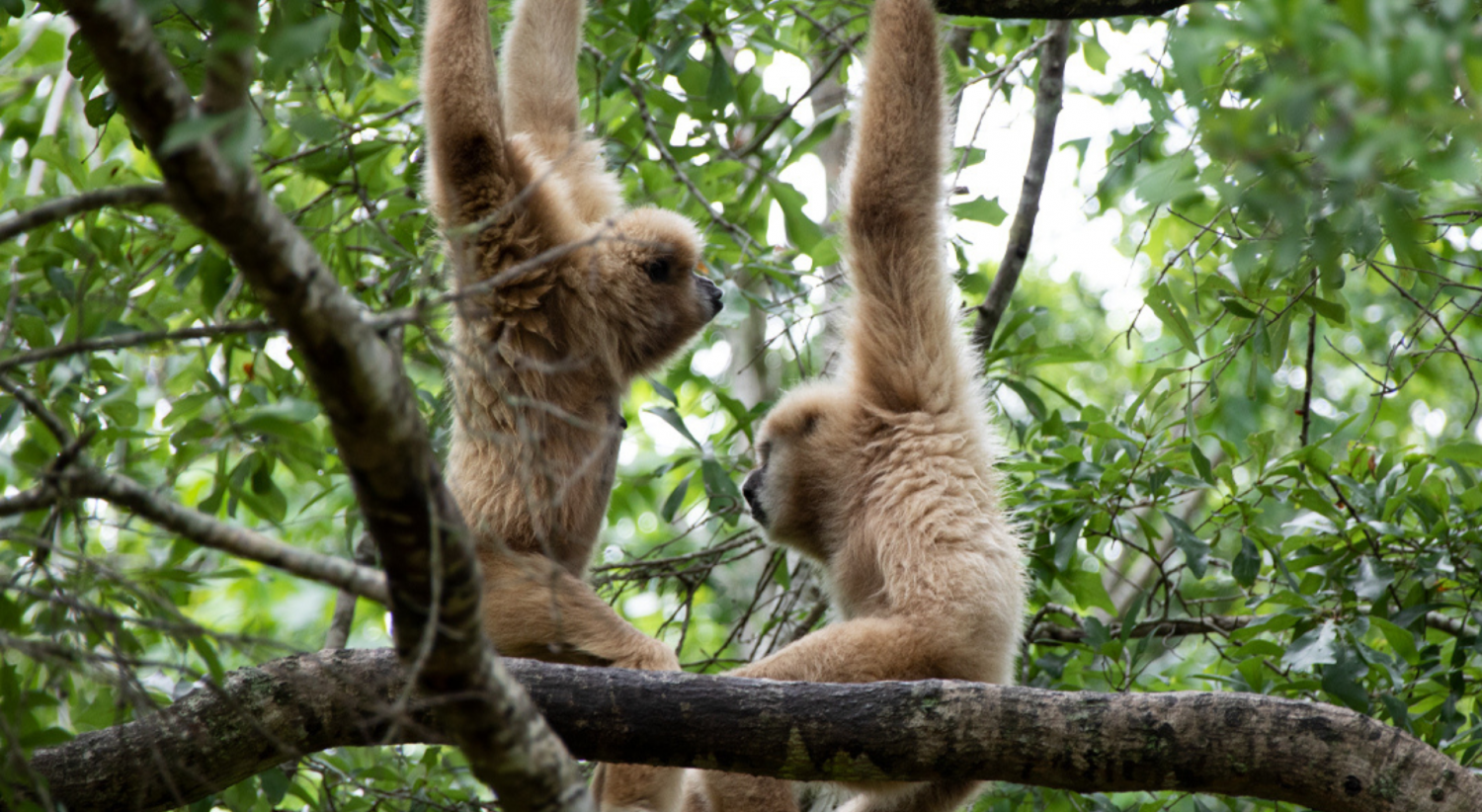

Quick Facts
Conservation Status:
Endangered
Diet:
Fruit, Leaves, & Flowers
Lifespan:
30 to 40 years
Bonnie (Front)
January 1, 1995
Clyde (Front)
February 28, 1995
Mick (Back)
February 3, 1997
Mickey (Back)
April 21, 1996
Our Gibbons
Several gibbons live with us here at Zoosiana. We have a pair that can be found on an island behind our Gem Mine and a pair that you can spot swinging around their island as you ride our Safari Express Train. Gibbons have slender bodies with long arms and legs. They use their long limbs to swing among branches and spend much of their time very high in the trees. Gibbons bend their hands to hook onto branches when swinging. Guests often ask why our Gibbons don't swim across the water from their island. Gibbons, and other apes, have very dense muscles that prevent them from swimming.
In the Wild
Gibbons are in the ape family. Apes, like monkeys, are primates; however, apes do not have tails, and they rely on vision more than smell. The white-handed lar gibbon is sometimes hunted for its meat, and young gibbons are sold in the illegal pet trade. Reintroducing gibbons into the wild has not been met with widespread success. Hopefully, however, improved methods may increase the success rate of rehabilitation, and the reintroduction of lar gibbons.
Fun Facts
- Gibbons sing duets, with the male and female complementing each other's part. These duets help the couple bond and mark their territory.
- A Gibbons song can be heard up to half a mile away.
- Gibbons and other apes are capable of using tools and language.
- Gibbons are classified as "lesser apes" because they are smaller than the greater apes.

